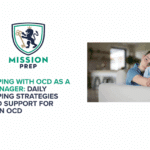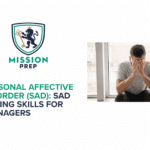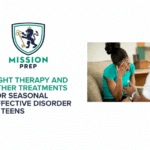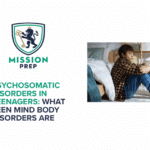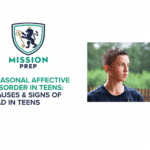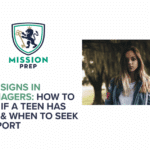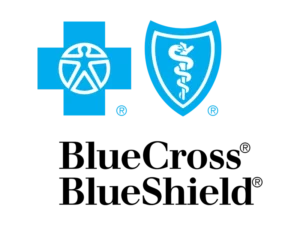Exposure and Response Prevention Therapy for OCD Teens

Perhaps the signs started off small: frequent handwashing, extra checking, reassurance-seeking…you might have thought these were simply signs of a phase your teen was going through. However, over time, they became worse. Now, the rituals from OCD may be taking over your teen’s life.
As a parent, you likely naturally want to help your child, but it can be difficult to know what really works. Plus, without the right awareness and knowledge, it’s even possible that you may unintentionally reinforce certain behaviors.
Fortunately, OCD can be treated very effectively. Whether your teenager is struggling with intrusive thoughts, compulsive rituals, or overwhelming anxiety, OCD therapy for teens offers practical tools for long-term recovery. One approach that is backed by research is exposure and response prevention (ERP), a type of cognitive behavioral therapy (CBT).
If you’re concerned about the signs of OCD in your child and want to discuss their treatment options, professional support is advised. A mental health professional can help you get to the root of your teen’s issues and understand the right approaches for their needs.
This page can also help, as it works as a useful guide to exposure and response prevention therapy by exploring:
- What OCD is
- How ERP works for OCD treatment
- Treatment packages for OCD
- How to find the right therapist
- Finding professional support with Mission Prep

What Is OCD in Teenagers?
It may be useful to break these terms down to better understand this condition: Obsessions are repetitive and unwanted, intrusive thoughts or images that cause a person distress.
Compulsions, a.k.a “rituals,” are actions someone might take to alleviate distress caused by obsessions. Unfortunately, performing compulsions only ever brings a temporary relief from anxiety or distress. They can be compared to having an itch in your mind – you keep scratching the itch by performing rituals, but the relief never really lasts.
Obsessions and compulsions can centre around a variety of themes. For example, someone with an obsession involving a fear of germs may wash their hands more often than needed. Or, a person with a fear of harm coming to themselves or others may check door locks multiple times.
Common Signs of OCD in Teens
The most common signs of OCD in young adults are obsessions and compulsions. For example, they may:
- Experience obsessions, compulsions, or both, on most days
- Spend over an hour a day on obsessions or rituals
- Have intense distress over repetitive and unpleasant obsessions and compulsions
- Feel a lack of control over their thoughts and actions
- Not obtain pleasure from compulsions, other than feeling only a short-lived sense of relief
- Avoid situations that may trigger obsessions or compulsions
- Experience problems in daily life due to obsessions or compulsions
For example, instead of compulsions, you might notice them avoiding surfaces others may have touched, withdrawing from friends and family, or a sudden downward turn in their academic performance.3
Additionally, a teen may show symptoms of perfectionism, which can commonly be confused for hard work. Instead, these signs of perfectionism may be rituals disguised as diligence, and parents often accidentally end up reinforcing them.
It’s good to be aware that, during adolescence, it can sometimes be difficult to discern typical teen behaviors from OCD. The teen years can often be a time of intense stress, so teens may find comfort in specific routines. However, this doesn’t always mean they have OCD. We take a look at the differences between OCD and typical teen patterns next.
OCD vs. Normal Teen Behavior
OCD differs from “normal” teen habits and anxieties in a few key ways.
If a teen has typical anxiety, then worries are usually general, realistic, and relevant to what is happening in their life. In contrast, with OCD, obsessions are very specific, often not based on realistic or rational fears, and play like a song on repeat in the mind.
Additionally, it’s also not uncommon for teenagers to have their own habits and personal preferences as they grow. For instance, they may like to have a tidy bedroom or enjoy having a bedtime routine. The difference between these routines and OCD routines is that normal habits can be flexible and often aren’t distressing if they are disrupted. Yet, in OCD, the routines or rituals aren’t flexible, nor enjoyable. They are tasks that the teen feels compelled to do to temporarily relieve distress.
OCD Therapy for Teens: How ERP Works for OCD Teens
The following information takes a closer look at how ERP works for treating OCD.
How Does ERP Work?
In essence, ERP works by encouraging a person to face their fears and see for themselves that obsessions are less likely to come true than they originally believed.
It does so by requiring someone to disengage from their rituals to break the link between triggers and compulsions. When they realize they no longer need to perform a compulsion to stop something bad from happening, the urge to carry out their usual ritual can be reduced. Therefore, by challenging their beliefs in this way, they can reduce the fears associated with obsessions and find long-term relief.
However, OCD therapy for teens isn’t always easy: they’re intentionally triggering their fears while making no attempt to bring themselves relief. However, with the right professional support and a compassionate, experienced therapist, a teen can make progress toward finding real recovery from OCD.
What Do ERP Sessions Involve?
The first step in ERP is an assessment of symptoms, including learning about what keeps OCD going. Discovering how compulsions and avoidance of triggers actually reinforce OCD can help someone approach their treatment with a new perspective and motivation.
Next, the aim of sessions is to create a treatment plan for OCD by working with your therapist to identify all of your symptoms. Once these have been recognized, a hierarchy of triggers can be created, arranged in order from least to most anxiety-provoking. This provides the basis for the exposure plan. The following sections explore how these plans work in detail.
Exposures:
Exposures involve triggering a person’s fears based on the elements they identified in an initial assessment, beginning with the least distressing item on the list. Doing so allows someone to face a more manageable fear first and repeat this exposure until it no longer provokes severe anxiety.
Once this has been achieved, it is possible to move on to more challenging triggers. This process builds up confidence in safely facing triggers and fears whilst observing that nothing bad will happen as a result of having this obsessional thought.
Response Prevention:
Following on from exposure is the response prevention side of ERP. Response prevention involves someone stopping themselves from performing their usual compulsions. This means that they’re not actively trying to reduce their anxiety, but instead allowing themself to sit with their uncomfortable feelings.
By taking this step, the mind can learn that rituals aren’t needed to reduce fear caused by the obsession, and that the obsession itself isn’t as scary as once believed. The brain can then recalibrate itself so that these obsessions provoke a less intense emotional response in the future.
Phased Compulsion Prevention:
Sometimes, completely stopping compulsions can feel too intense, especially when they have been in place for a long time. This is why working with a therapist trained in ERP and having a flexible treatment plan is so important. You and your therapist can brainstorm ways to change or reduce the compulsions you rely on before attempting to stop them altogether.
Homework:
OCD therapy for teens frequently involves homework, which plays a significant role in ERP’s success. This homework may involve exposures to be practiced outside of sessions. By practicing these at home, as well as during session times, people may progress through their OCD treatment plan more quickly.
You could think of ERP as being similar to any skill that requires practice. If you want to learn how to play guitar for the first time, having lessons once a week may allow you to progress your technique to a certain extent. However, by practising at home in your spare time, you may be more likely to master the skills needed to play your favorite songs in a shorter space of time.
Parental Support and Involvement:
Support and encouragement from parents can go a long way in helping teens recover from OCD. For example, by prompting a teen to carry out their exposure and response prevention at home in the ways specified by a therapist. Further, when parents ensure that they are not assisting teens with their compulsions, rituals, or avoidance, they are reducing their role in keeping their child’s OCD cycle going.
If you are seeking a treatment for OCD that’s grounded in science and research, rest assured that ERP is a type of behavioral therapy OCD youth can achieve recovery with. The following sections explain the various settings that can provide OCD therapy, such as ERP.
OCD Therapy for Teens: Treatment Options
Outpatient cognitive behavioral therapy ERP: Outpatient therapy can be delivered either face-to-face in a clinic or a therapist’s office, or via telehealth video appointments. If you’re wondering whether in-person or virtual sessions are more effective, research shows that ERP delivered virtually can be just as impactful as face-to-face treatment.5- Intensive ERP therapy for teens: An intensive outpatient program (IOP) may be more appropriate for teens who might benefit from extra time and support with mental health professionals. IOPs offer patients a full and varied schedule of therapeutic interventions and activities on multiple days per week, providing extra support and care for your teen’s recovery.
- Residential ERP program for teens: A residential (inpatient) program can provide 24/7 care, support, and treatment for teens with more complex needs or severe mental health conditions. They provide a structured, safe environment for your teen to fully focus on their healing. This may be appropriate if your child’s life is severely limited by their OCD symptoms, or if there are multiple mental health concerns, such as trauma, alongside an OCD diagnosis.
What to Look For in a Therapist
If you aren’t sure where to start when seeking a therapist to treat your teen’s OCD, we have some suggestions to help. When searching for a therapist, you may want to consider the following questions:
- Does the therapist have specific training in ERP (OCD therapy for teens)?
- Are they experienced in working with teenagers?
- Do they take a collaborative approach to treatment, such as taking the teen’s and parent’s preferences and strengths into consideration?
- Is the therapist qualified and licensed?
- Will they create a personalized treatment plan for your teen?
- Are they local (for face-to-face therapy) or do they offer virtual therapy?
- What is the therapist’s availability, and does it fit into your teen’s schedule?
- If you have medical insurance, does the therapist you have in mind accept your provider?
Mission Prep Therapists
If you’ve been searching for a therapist for your child, you may have been searching online, using phrases like “ERP therapist near me teen.” This search may even have brought you here to this page.
Mission Prep provides support for teens and their families who are challenged by mental health issues such as OCD. We use a blend of evidence-based therapeutic approaches, like ERP therapy OCD teens can grow from, as well as innovative interventions to ensure your teen receives the best care possible. We also work with teens and their families to create sustainable change and facilitate recovery.
Our programs include residential, intensive, outpatient, and telehealth treatment, so your teen can get the care they deserve in a flexible way to suit their needs, from licensed mental health professionals.

Find an ERP Therapist Through Mission Prep
If your teen struggles with intrusive thoughts, compulsions, or extreme anxiety, know that it’s not your fault – and it’s not something they typically can “grow out of.” OCD is a treatable mental health condition, and recovery is possible with the right professional support. Exposure and response prevention therapy allows a teen to face their fears, stop their compulsions, and regain control of their lives.
Here at Mission Prep, we specialize in treating teens and young adults with mental health challenges, including OCD. Whatever guidance you are looking for, our experienced team is here to help your family through this challenging time. Contact us today to book a free, confidential consultation and discover how our therapists can support your teen’s healing journey.
References
- Millet, B., Kochman, F., Gallarda, T., Krebs, M. O., Demonfaucon, F., Barrot, I., Hantouche, E. G. (2004). Phenomenological and comorbid features associated in obsessive–compulsive disorder: influence of age of onset. Journal of affective disorders, 79(1-3), 241-246.
- AACAP. (n.d.). Obsessive Compulsive Disorder Resource Center. Retrieved September 8, 2025. https://www.aacap.org/aacap/Families_and_Youth/Resource_Centers/Obsessive_Compulsive_Disorder_Resource_Center/Home.aspx
- Anxiety and Depression Association of America, ADAA. (n.d.). OCD at school. Retrieved September 8, 2025. https://adaa.org/understanding-anxiety/obsessive-compulsive-disorder/ocd-at-school
- International OCD Foundation. (2025, May 16). Exposure and Response Prevention (ERP). https://iocdf.org/ocd-treatment-guide/erp/
- Pinciotti, C. M., Bulkes, N. Z., Horvath, G., & Riemann, B. C. (2021). Efficacy of intensive CBT telehealth for obsessive-compulsive disorder during the COVID-19 pandemic. Journal of Obsessive-Compulsive and Related Disorders, 32, 100705. https://doi.org/10.1016/j.jocrd.2021.100705

